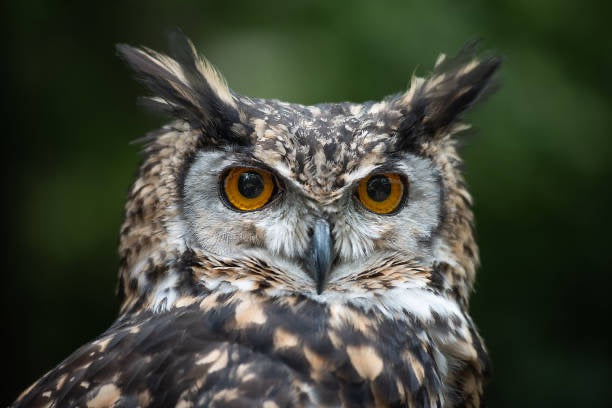
Owl Hearing: The Secret to Their Deadly Hunt is Lopsided Ears
Share
When we think of owls, we imagine silent flight and piercing eyes. But their most formidable weapon isn't what you see—it's what you can't. Hidden beneath their feathers is an evolutionary masterpiece: a pair of asymmetrical, or "lopsided," ears that makes them nature's ultimate acoustic hunters.
This incredible adaptation allows them to pinpoint prey with deadly accuracy in complete darkness, or even under a thick blanket of snow. Let's break down the science behind this auditory superpower.
What Makes an Owl’s Hearing So Special?
The secret lies in asymmetry. On many nocturnal owl species, like the Barn Owl, the ear openings are placed at different heights on their head.
The right ear is often higher and points slightly downward.
The left ear is lower and points slightly upward.
This unique placement creates a tiny delay in when a sound reaches each ear—a difference of microseconds. Their brain processes this "interaural time difference" to build a precise, three-dimensional map of their surroundings using only sound. It’s like having a built-in GPS for locating prey.
In a New York wildlife study, researchers confirmed that this skill is astonishingly effective. Using sensitive microphones, they observed Barn Owls locating and catching mice hidden beneath 18 inches of fresh snow, guided by hearing alone.
The Science: A 3D Sound Map for Pinpoint Accuracy
How accurate is this 3D sound map? A recent study in Science Advances quantified it. An owl's brain can interpret the time and volume differences between its ears to locate a sound's origin within 1-2 degrees.
This gives them a massive advantage over other predators.
Arctic Snowy Owls using their hearing can catch prey hidden under snow with an 88% success rate.
Hawks, which rely primarily on their powerful eyesight, only succeed 35% of the time in similar conditions.
A Skill Learned from Birth
This incredible ability isn't just instinct; it's a skill honed from a young age. Nest cameras have shown owlets practicing "sound mapping" for months before they ever hunt. They perform deliberate, figure-eight head movements, tilting and rotating to build their mental sound map. By listening to the rustle of leaves or the snap of a twig, they are calibrating their internal audio processor for their first real hunt.
From the Forest to the Future: Owl Ears Inspiring Technology
This marvel of natural engineering is so effective that it's inspiring cutting-edge human technology.
Advanced Microphones: Engineers at Stanford have developed "owl ear" microphone arrays that can pinpoint sound sources ten times more accurately than standard equipment.
Vehicle Safety: Automotive companies are testing similar acoustic technology to help cars detect and avoid pedestrians, especially in low-visibility conditions. This could prevent thousands of accidents each year.
The owl’s auditory system is truly one of nature's most sophisticated designs. By studying these masters of the night, we continue to unlock innovations that can shape our future.
